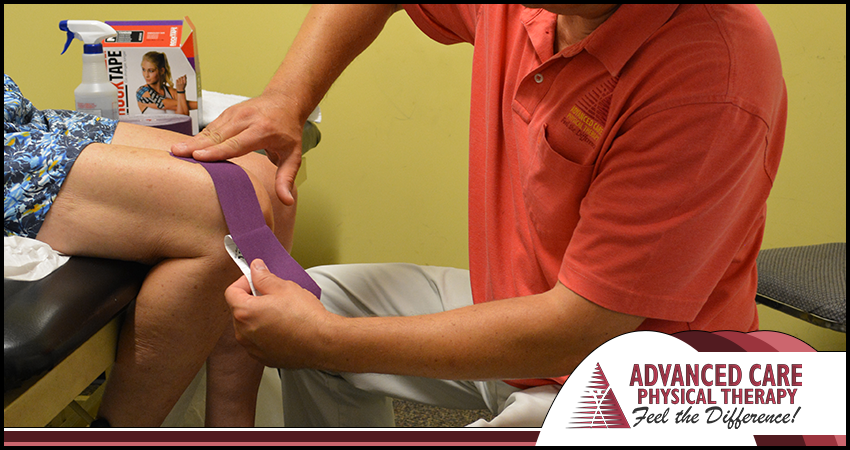Kinesiology Taping Is For You!
You now may have noticed your favorite elite athletes using K-tape—Kerri Walsh Jennings, Andy Roddick, James Harden to name a few. Guess what, K-tape is not just for the pros, but it can greatly benefit your healing and everyday functioning, too.
K-tape has three main uses: pain mitigation, decompression and neurosensory input. The K-tape achieves these effects in two ways. Firstly, K-tape mechanically decompresses the skin and underlying tissues, eliminating pain by relieving pressure from these pain nerve endings and promoting better circulation to the area taped. Secondly, K-tape provides stimulation to many types of sensory nerves which send messages to the brain about touch, pain, temperature, and pressure. This stimulation by K-tape also effects underlying fascial tissues which sends messages to the brain for proprioception—how your limbs know where to move without the help of your eyes. Both stimulation to sensory nerves and fascial tissues by K-tape are very important for encouraging normal movement and preventing injury.
Just like when you bang your knee on a sharp corner and mindlessly rub the painful area to make it feel better, K-Tape works similarly when adhered to your body. As the skin and fascial tissue are “pulled” by K-Tape, your brain becomes more focused on the K-taped area, reducing your pain.
So next time you are watching TV and see colorful tape on the shoulder of a basketball player or the thigh of a volleyball player, you will know the science behind that weird spider web of tape. But know that this is not something just for the pros. K-tape can be applied by your physical therapist to you. If you want more information about K-tape or need treatment in physical therapy come see us at Advanced Care Physical Therapy.


